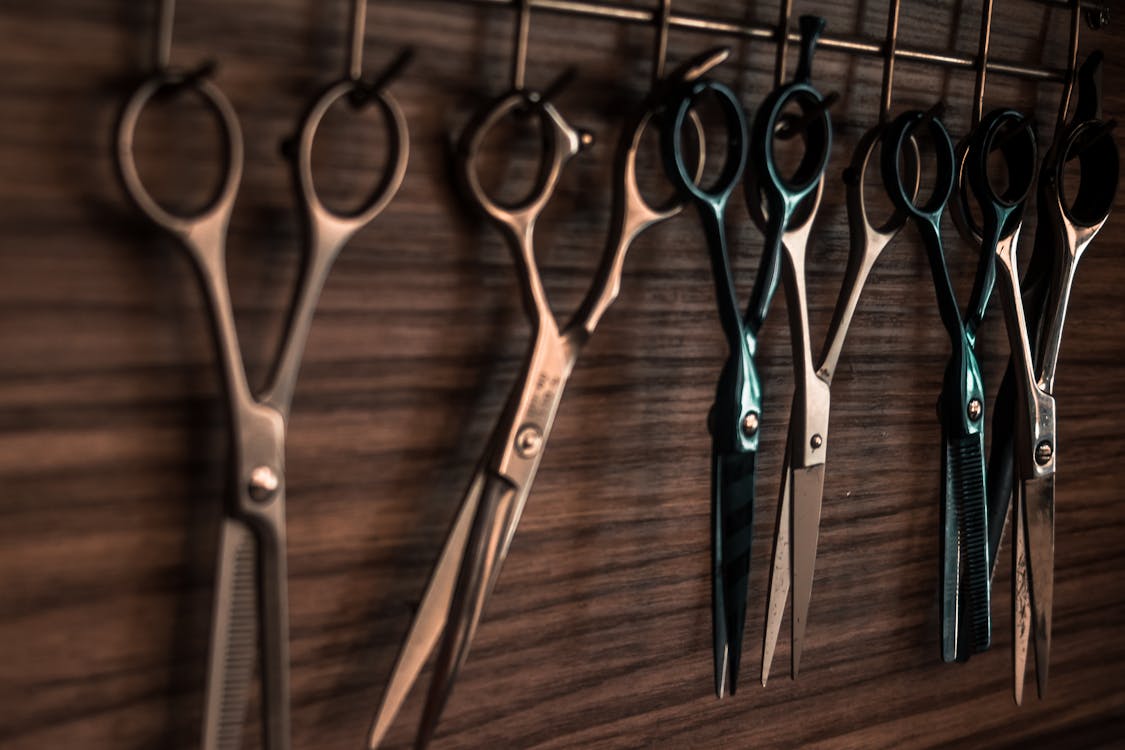Scissor sharpening near me Specialized for Groomers
Blade sharpening Specialized for Groomers
If you are a professional You are aware of the importance of having sharp knives. It not only ensures that your work is productive and precise, it also assists in preventing injuries. This is where honing the steel comes in. Honing steel is a crucial tool for any serious chef or butcher, but how exactly does it work? And why is it vital to your knife proficiency? In this article, we'll examine these and other questions as we discuss the benefits of honing steel as well as the best ways to use it.
What is honing?
Honing steel (also known as sharpening iron) is a long , slender metal rod that has a smooth edge that is utilized to sharpen and keep the edge of blades of knives. It is made up of two components: the rod itself and the handle, which houses an elongated grip for safe handling. The rod's body is adorned with grooves that are arranged lengthwise on its body; these grooves create edges when the knife passes over them. When honing steel is used properly, it produces an ultra-sharp edge to a knife blade that should last longer than were to use whetstones or electric sharpeners by themselves (1).
What are the advantages of honing steel?
One of the biggest benefits of using honing steel is the fact that it will help extend the life the knives. By running your blades frequently over the ridges on your honing iron, you'll keep them sharper for longer time periods by aligning edges that are dull or jagged in time (2). This can save you time and cash in the end because you don't have to buy new blades as often! Also, because honing steel isn't sharpening tools like whetstones, or grinders, it won't damage or wear out the blades as time passes (3).
Another benefit of using honing steel is the safety aspect: If used correctly, it helps prevent accidental cuts from dull blades by creating a razor-sharp edge every time you utilize it (4). When cutting through materials that are tough dull blades are prone to cause slips or nicks. Regularly honing steels can help keep blades sharp and minimize the risk of injury by an enormous amount.
How can I use my honing tool correctly?
Honing steels properly requires patience and precision; here are a few steps to start:
- 1) Begin with a knife that is perpendicular to the rod, not against it. It should be at around 20 degrees (5).
- 2.) Moving your knife gently across one side of the rod at steady intervals until you are at its end; repeat the motion on the opposite side, using light pressure throughout every motion (6).
- 3.) Be sure to maintain a consistent angle throughout every stroke. A slight angle could result in an unproductive edge, while excessive angle can result in damage to your blade (7).
- 4.) After each side is completed equally, gradually move toward its foundation until both sides are addressed before repeating strokes from tip to base many times, based on how sharp your blade's edge to be.
- 5) Finalize by wiping away any metal shavings using the help of a damp cloth, before placing them in a storage container to use in the future!
Conclusion
To sum up the point, honing steels are vital equipment for every serious enthusiast looking for precise edges on their knives without creating unnecessary wear and tear due to harsh tools like whetstones or electric sharpeners. They not only make you money due to extending blade life as well, but they can also help create a an improved and safer cutting experience each time! Take care while using them and use a steady and consistent approach to each cut. Good luck!
Sharpening Seated Knives
Serrated knives come in handy for many different tasks such as slicing vegetables or cutting through meats that are tough. But when the serrations on your knife begin to dull, it's time to sharpen the blades. In order to do that, you need a diamond sharpening steel. A diamond sharpening steel is a valuable tool for professional and home cook. It allows you to swiftly and accurately sharpen straight-edge but also serrated knives as well as scissors.
The best method of sharpening your serrated knife is to use diamond cutting edge stones. This kind stone is made of diamonds, and is extremely durable. The more hard the stone, the sharper its blade. Diamonds cut through any material easily. They are utilized to create jewelry and are extremely expensive.
There are a variety of methods to sharpen your serated knife without spending several thousand dollars. You can make use of a standard filet knife or bench grinder and even sandpaper.
There are a variety of stones available at your local hardware stores. Some people like to use the emery papers which are slightly less expensive than diamond stones. If you're looking to achieve the best results, you must consider a diamond.
What is a diamond that sharpens steel?
A diamond-sharpening steel (also called honing rod) is an essential instrument to keep the kitchen knives sharp. It features a diamond-abrasive surface, making it ideal for sharpening straight-edge blades and serrated edges. The diamond's fine grit surface assists in removing burrs and nicks from the blade edge while also realigning the fibers of metal so they align perfectly when reattaching the edge of the blade. This makes sure that the knife will hold its edge for longer than the other sharpening stones or rods.
Utilizing the Diamond Sharpening steel to Sharpen serrated knives
Sharpening serrated knives requires specialized methods that differ from the ones employed for straight-edged knives. Before you use your diamond sharpening steel, make sure that you go through the instruction manual for your specific product since the instructions may differ in accordance with the type of rod you've bought.
- Step 1: First, utilize a soft , soft cloth to wash off any food or debris from the blade. Next, you'll need the diamond sharpening tool to sharpen the blade.
Step 2. Take the handle of your diamond sharpening steel with one hand and hold the blade of your serrated knife against its lengthwise surface at an angle of between 20deg and 30deg with respect to the lengthwise side (as as shown on Figure 1.). - Step 3: Slowly move it along the lengthwise side with alternating forward and reverse motions until all of its serrations have been brushed on it several times (as shown in Figure 2.). Be careful not to push too hard or move too fast--this can result in damage to your knife's edge and surface of your honing rod!
- Step 4: After all the serrations of your knife have been lightly brushed against the blade several times, repeat Step 3 with each serration until have the desired results (as shown in figure 3).
- The 5th step: In order to end up, offer each individual serration a final brushing using light pressure . After that, clean off any remaining residue with the help of a soft cloth, before placing them away safely!
Conclusion
Sharpening serrated knives can be a challenge if you don't know what you're doing, however with the proper method and attention it's not difficult to maintain these tools with just a few strokes on a quality honing rod such as diamond sharpening steel! Follow these steps whenever you need to touch up or reshape your knife's edges--you'll be glad you did!
Learn more here:
Zdravje in Dom Kombuča shears sharpening knife cutting tools

